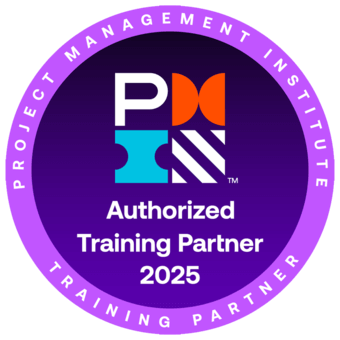Microsoft Project Fundamentals - 2019-365
Microsoft Project Fundamentals - 2019-365
Skills you’ll gain
Starting out in Microsoft Project or need a refresher? This online course is designed to give you a solid foundation in the fundamentals of MS Project.
In these how-to video tutorials you will learn how to use various views and tables, schedule and manage tasks, analyze and measure progress, budgets, and resources, customize and share reports, and much more.
Whether you are a team member or project manager, these tutorials will help you get the most out of Microsoft Project to manage your projects more efficiently. You can earn 19 PDUs or contact hours toward your Project Management education for certification with PMI.
Videos are recorded in Microsoft 365.
If you would like to learn more about project management, try our Basics or Engineers courses. If you'd like to know everything - from beginner to advanced lessons, then our Project Management Bootcamp is for you. And if you’re preparing for the PMP® Exam, look no further than PMP® Certification Training.
Once enrolled, our friendly support team and tutors are here to help with any course-related inquiries.
Syllabus
Download syllabus-
1
Run Microsoft Project for the First Time Recognize best practices when running MS Project for the first time. 2m
-
2
About the Microsoft Project User Interface The Microsoft Project user interface is made of seven areas. Each of these areas help you perform a particular action. 3m
-
3
About the Ribbon The ribbon area takes up the top portion of the Microsoft Project user interface. Here, you will find icons, tabs, and access to the backstage. 6m
-
4
Using the Ribbon The ribbon contains all the actions (icons) you may need to perform within Microsoft Project. 5m
-
5
Using the Backstage The backstage is a full-screen area that allows you to open, save, share, and print your project. 5m
-
6
Using Views and Tables Access views and tables via the view tab and selecting icons located in the task views and resource views sections. 5m
-
1
Constraint Based Scheduling The scheduling engine calculates dates for you based on constraints you place on tasks and resources. 5m
-
2
Critical Path and User-controlled Scheduling Microsoft Project calculates the critical path by way of looking at how all tasks connect with their predecessor/successor relationships. User-controlled scheduling can effectively break the ability to identify the critical path because durations, start dates, and finish dates are not required when using this feature. 4m
-
3
Configure Project Options Microsoft Project offers many options for you to configure the user interface, scheduling engine, and task tracking for your project. Most of these options are located in the backstage using the Options menu item. 5m
-
1
Create a New Project Before you create a new project, make sure you have all the project options configured as you want them. Unless you have a unique reason to do otherwise, it is a good practice to start with a blank project. 5m
-
2
Configure a Project Calendar Learn the differences between the Microsoft Project calendars and when to use them. As a general rule, you should use the standard calendar. 6m
-
1
Add Tasks to the Project Learn best practices for adding tasks to a project. 4m
-
2
Add Durations to Each Task Learn to standardize the type of duration you add to tasks in days or weeks for ease of use. 5m
-
3
Add Predecessors to Each Task To link tasks together, the best approach is to insert the predecessor column into the Gantt chart entry table, then link tasks from the top of the project to the bottom. 5m
-
4
Create the Critical Path Utilize the network diagram to see how all the tasks link together and create a critical path. 5m
-
5
Add Resources to the Project When you add resources to a project, you do so by using the resource sheet view. In this view, you can add named, generic, material, and many other types of resources. 5m
-
6
Create Resource Assignments Learn to add resources to a task and identify how much time each resource will require for that task. 6m
-
7
Build a Work Breakdown Structure Once you define the tasks and resource needs for your project, you should create a work breakdown structure -- or WBS. The WBS will make it easier for you to know when one set of activities finish and another begins. 5m
-
8
Add Costs to the Project The best approach to adding these costs is to create cost type resources and assign them to tasks. Once you have a task that represents the cost for the project, you can assign the appropriate cost resources to the task and then enter the amount. 5m
-
9
Add Milestones to the Project You add milestones to a project so you can track the completion of certain groups of tasks. Milestones are not required in a project but you will likely find them helpful when building reports or sharing the project with others. 4m
-
10
Add Lag and Review the Critical Path When you are updating tasks in a project, you might want to make some light adjustments. You can use the free slack field to see how much time you have before the task becomes critical. 5m
-
11
Adjust Resource Allocations Resource allocations display as a red person icon in the indicators column. This column displays in most Gantt chart views. In nearly any task-level view, you can insert the indicators column if you need to. 4m
-
1
Create a Baseline Baselines store certain pieces of information related to your project so you can compare your original plan to the current plan. 5m
-
2
Task Status Updates Updating task status is an important process a project manager should follow. You will get updates from your team and update the project progress. 5m
-
3
Resource Assignment Status Updates When you update resource assignments, you are updating the time a person requires for the task or updating the costs for a task. 4m
-
1
Create Custom Views and Tables Views represent how the current window looks in Microsoft Project. The table defines the column of information you want to see. 5m
-
2
Create Custom Fields Microsoft Project provides many of the fields you need, but if you require your own, you can create them. You can even create formulas and graphical indicators. 5m
-
3
Create Graphical Indicators When you create a custom field, you can further enhance it to use graphical indicators. These indicators allow you to display things like red, yellow, and green flags. 6m
-
1
Working with the Timeline The timeline provides a graphical visualization of your project. The timeline is excellent for reviewing the project’s implementation plan from within PowerPoint or in emails. 6m
-
2
Multiple Timelines in Project 2016, 2019 and Online New to project 2016-2019 and Project Online is the ability to add multiple timelines to a single timeline view. Timelines are excellent for reviewing the project’s implementation plan from within PowerPoint or in emails. 2m
-
3
Working with the Reporting Module The reporting module contains most of the capabilities you can use in Microsoft Excel. 5m
-
4
About Agile Projects Learn how to manage you project using agile techniques. 1m
-
5
Using the Task Board The task board allows you to manage projects using an agile approach, where you drag-and-drop tasks from one column to another. The columns allow you to set a status for a task, like defining what tasks are next up, in progress, done, and more. 6m
-
6
Using Sprints Using Project Online Desktop, you can define the sprints, add tasks to those sprints, and then use a board view to define the completion of the work. 5m
-
7
Using Boards and the Gantt Chart Learn how tasks and boards are related, and how tasks appear on various kinds of boards including the Gantt Chart. 3m
-
8
Sharing Boards Learn three ways to share the information in your project outside of Microsoft Project. 3m
-
1
Tips and Tricks for Copying Views When you create custom tables, reports, views, filters, and other custom items, you can copy these from one project to another. You can do this using the organizer. 4m
-
2
Tips and Tricks for Replacing Resources When you have resources on a project, you may need to replace them at some point in time. Learn best practices to replace a resource. 4m
-
3
Tips and Tricks for Printing You can print nearly anything in Microsoft Project, but you cannot print multiple items displayed on the screen. 5m
-
1
Conclusion An overview of key takeways from previous lessons in the course. 5m
Certificate
Certificate of Completion
Awarded upon successful completion of the course.

Instructor
Bill Raymond
Bill Raymond is an author, public speaker, trainer, and consultant. While working in the product development, portfolio and project management markets, his personal objective is to help companies and individuals strategically plan and deliver business growth.
Bill is the proud recipient of the prestigious Microsoft Most Valuable Professional award in MS Project for the past 13 years. The Microsoft MVP Award recognizes exceptional technical community leaders from around the world who voluntarily share their high quality, real world expertise with others. In Microsoft's words, "MVPs are a highly select group of experts representing technology's best and brightest who share a deep commitment to community and a willingness to help others."

Bill Raymond
Microsoft Project MVP
Accreditations
Link to awards The PMI ATP seal, PMI, PMP, CAPM and PMBOK are registered marks of the Project Management Institute, Inc.How GoSkills helped Chris
I got the promotion largely because of the skills I could develop, thanks to the GoSkills courses I took. I set aside at least 30 minutes daily to invest in myself and my professional growth. Seeing how much this has helped me become a more efficient employee is a big motivation.



